Health care systems compete for clients with new facilities, doctors, procedures

Northern Indiana has been the workshop of the Midwest where blue-collar workers trooped across factory floors. Now, some of its top employers are more than a dozen hospitals, a legion of outpatient clinics and a workforce that is 75,000 strong — and growing.
Four of the top 10 largest hospitals in Indiana by bed size are in the Region, according to Hospital Management, a B2B website. And new ones are either under construction or just opening.
Dr. Crystal Shannon, dean of Indiana University Northwest’s College of Health and Human Services, said patients shouldn’t worry about all the development “overflooding the market.”
“If anything, we have seen an increase in demand and options for quality health care because we aren’t necessarily getting healthier,” she said.
More options
With increased demand, health care providers are stepping up to make sure residents in the Region have plenty of options.
The Franciscan Alliance of Mishawaka opened a $200 million Crown Point hospital just in January and is preparing a three-story Dean and Barbara White Cancer Center on the same campus in 2026. Franciscan recently erected a new hospital in Michigan City and plans to expand its Munster location again too. In 2020, it partnered with Beacon Health System on a new hospital in La Porte.
Munster-based Community Healthcare System was set to open a new immediate care and medical services center in Munster this month. Work crews also are building a three-story cancer center on Broadway in Crown Point.
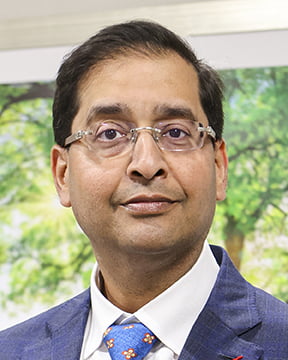

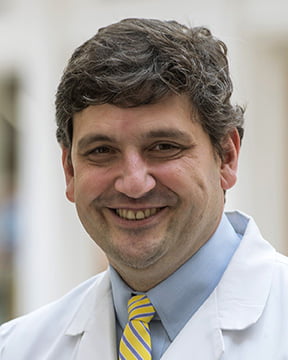
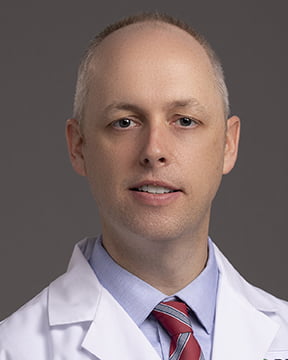
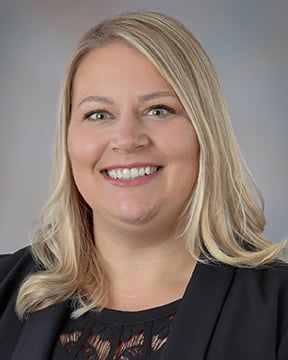
Chicago’s academic-based health systems are bringing big city know-how into that same market.
University of Chicago Medicine is set to power up a two-story, micro hospital and outpatient center by May in Crown Point — its first in Indiana.
Chicago’s Rush University System for Health opened its first outpatient center outside of Illinois in Munster a year ago and is adding Rush Midwest Orthopedics in Munster and Rush Physical Therapy locations in Schererville, Crown Point, Winfield, Hebron, Valparaiso and Portage.
The overall expansion of health care in the Region has been a boon for IUN’s allied health undergraduates who work at these facilities as part of their curriculum.
“This is where students can engage in patient care and see the actual outcomes,” Shannon said.
Mark Fox, interim director of the IU Northwest School of Medicine, agrees that Northern Indiana’s medical industry offers the full spectrum of services from which students can learn. That includes aging inner-city hospitals to facilities in affluent suburbs where gleaming new centers, under construction or on the drawing board, are filling with local patients.
Chicago expertise here
Paul Casey, a Rush senior vice president, said his university-based health system’s recent entry here was driven by COVID-19 pandemic restrictions on in-person appointments.
He said having to connect with patients via teleconferencing “enlightened us about how many patients were picking out Rush from Northwest Indiana.”
Dr. Tamer Mustafa, a primary care provider at Rush’s Munster clinic, said his practice has been growing rapidly.
“My patients are grateful we have a closer location they can access with all the same great care they had previously been getting,” Mustafa said.
UChicago’s brand name is respected, but whether patients will drive into Chicago for it is no longer a given, UChicago’s Dr. Blase Polite said. He is the chief physician for the soon-to-open Crown Point micro hospital.
“The world is changing,” he said. “People want health care closer to them but won’t compromise on quality and the level of expertise Chicago brings — without driving into the city.”
In answer to that, UChicago is finishing an eight-bay emergency room, the eight-bed micro hospital, cancer center, full radiation suite and surgical center.
“We will bring our specialization and interventional procedures in gastroenterology and lung procedures — available in very few places in the country — doing that close to home in Crown Point,” Polite said.
Chicago’s medical reputation is driving the growth of new facilities and services by Indiana-based medical networks as well.
Dr. Alan Kumar, chief operating officer of Munster-based Community Healthcare, saw a trend he wanted to end.
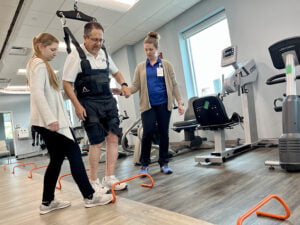
“We saw more than 500 patients a year transferring to Chicago for higher-level stroke care,” he said. “So, we made the decision to make an eight-figure investment in Crown Point, and now we have the only comprehensive stroke and rehabilitation center in Northwest Indiana.”
Dean Mazzoni, president and CEO of Franciscan Health Dyer, Michigan City and Munster, said locating new facilities requires careful consideration.
“Is there a gap in programs and services in a particular community or market?” he asked. “Does demand currently outpace supply for those programs and services in a particular location? Do patients have to travel great distances for the health care they need?”
Kumar said they also have a process for making these types of decisions.
“We do evaluations across the board with various data sets and our own understanding of the number of patient appointments and wait times in various clinics to see how the market matches up to our business plan,” he said.
Waiting is not easy
Health care expansion here should reduce wait times, along with better technology to manage appointments. It also should reduce the reasons to go to Chicago for specialized care.
Polite said the efficiencies at their new, compact UChicago location should give Indiana patients access to more doctor appointments and shorter wait times than commuting into the city.
Kumar said wait times at Community’s hospitals should be significantly less than those in Chicago.
“Once we see someone having difficulty seeing their specialist within two weeks, we start recruiting more staff,” he said. “We plan ahead so we stay ahead of that issue.”
Mazzoni said Franciscan also weighs the time patients have to wait to see their provider when distributing medical resources. The system’s staff relies on technology to both expand access and expedite scheduling.
“The latest imaging technology is much faster and provides greater resolution, allowing for shorter appointment times so more patients can be seen sooner,” he said.
Franciscan also relies on technology to check up on patients.
“Franciscan leans heavily on virtual health care experience for our physicians to see patients outside of their traditional offices and monitor patients remotely after they are discharged, ensuring that they do not return to the hospital prematurely,” Mazzoni said.
Classic hospitals revisited
Dr. Dan McCormick, president and CEO of Franciscan Health Crown Point, said they are overhauling old-school general hospitals here.
“The new Crown Point hospital appears to be an updated, smaller version of the classic general hospital, but the facility is not smaller when it comes to patient care and experience,” he said.
“We have less square footage for administrative spaces and invested in significantly upgraded technology and clinical space to better serve the community.”
Methodist Hospitals has expanded and renovated its Gary and Merrillville emergency departments, expanded its Gary intensive care unit and four suburban CareFirst ambulatory centers, offering immediate care, imaging services and physician offices.
Methodist has opened new centers for breast cancer, orthopedic, spine and heart rhythm care and most recently for sex assault victims.
Northwest Health operates hospitals in La Porte, Knox and Porter County at U.S. 6 and Indiana 49, as well as two freestanding emergency rooms, three ambulatory surgery centers and outpatient centers in Portage, Valparaiso and Michigan City, and multi-specialty physician groups throughout Northwest Indiana.
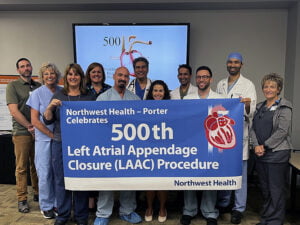
Northwest Health — Porter offers a new transport service for mothers experiencing pregnancy complications and for cardiac procedures, which reduces stroke risk, and a minimally invasive valve repair and replacement.
“As the local hospital for Porter County, we are always listening to the needs of our community and are working to add more access to comprehensive, high-quality health care,” said Sarah Hunter, chief operating officer for Northwest Health.
Beacon Health System operates facilities in north central Indiana and southwest Michigan, including Memorial Hospital in South Bend, Elkhart General Hospital, Beacon Granger Hospital and Franciscan Beacon Hospital in La Porte.
Diane Maas, Beacon’s chief strategy and digital growth officer, said Beacon has opened outpatient clinics in smaller city settings.
“People would rather go to a more retail setting,” she said. “It’s perfect for them because they don’t have to travel downtown to the hospital and pay hospital rates.”
However, Beacon has plans for hospital growth too.
But unlike the suburban migration of new medical centers now underway elsewhere, Beacon Health Systems is reinvesting in downtown South Bend, with a $232 million, 10-story patient care tower now under construction on its Memorial Hospital campus.
Payment due
But lawmakers are concerned about the costs of health care. Indiana had the seventh highest hospital prices in America, said Matt Bell, principal and chief policy strategist for the Indianapolis-based Hoosiers for Affordable Healthcare.
He said Rand Corp.’s 2022 National Hospital Price Transparency Study found Hoosier employers and insurance plans paid prices as much as three times higher than Medicare would pay at some, but not all, area facilities. Costs are listed by hospital on their website at www.h4ahc.com.
“Why is it more expensive to have a high-risk birth in Indiana than in Michigan, Ohio, Illinois or Kentucky? That is stunning in a state where the cost of living is 9 percent below the national average,” Bell said.
Kevin Brinegar, Indiana Chamber of Commerce’s out-going president, said his organization recently did its own study and came to much the same conclusion.
“Indiana has higher health insurance premiums and costs,” he said. “It’s well documented.”
Bell said what drives the spiraling prices is unclear, which is why his organization urges the Indiana General Assembly to look into the reasons.
State Sen. Ed Charbonneau, R-Valparaiso, said he is among state legislators ready to do just that.
“And I don’t think the hospitals are going to like it,” he said. “Our legislative leadership has sent letters to the hospital chains, cajoling them, shaming them to get down to the national average. The response hasn’t been enthusiastic.”
He and his colleagues are working to reduce costs, but the process is slow going. Two of five proposed laws about health care were signed by Gov. Eric Holcomb this last legislative session. Charbonneau, chairman of the Indiana Senate’s health and provider committee and a former president of Methodist Hospitals, said he has been concerned about the problem for decades.
“I’ve seen hospitals consolidated to where a few very big hospital chains control the state,” Charbonneau said. “Not-for-profit hospitals are operating as if they were for profit. They should be thinking a little more about their service.”
He said the other problem is that Medicaid claims are growing at a faster rate than state revenues.
“That is problematic,” he said.
But Indiana also spends much less on health care per resident than do other states. In 2019, Indiana spent $55 annually per resident compared to the national average of $91, according to a yearlong analysis by the Governor’s Public Health Commission.
Indiana also is ranked 35th in the nation for overall health, according to the 2022 America’s Health Rankings report.
Charbonneau said one bright spot is Valparaiso’s HealthLinc.
“They treat anybody who walks in the door,” he said. “They definitely make a difference.”
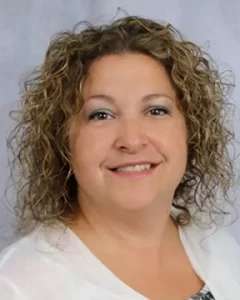
HealthLinc is among dozens of qualified health centers across Northern Indiana receiving federal funding to offer comprehensive medical and behavioral health services for all, regardless of their ability to pay.
“There always seems to be plenty of people struggling, even those who can afford private health insurance but have plans with high deductibles,” said Melissa Mitchell, HealthLinc’s new CEO. “They are not living like they have insurance for day-to-day situations. They need someone, like us, to help them.”
She said she expects HealthLinc to continue to expand.
“We are soon adding our biggest location yet this spring in Michigan City, behind the Ivy Tech building,” Mitchell said.
Competition and costs
Hospital leaders on the other hand say they are just trying to keep up with the demand for new technologies and treatments, which do not come cheap.
“New, mind-boggling medical technologies result in a longer and better life, but they are expensive and raise the cost of health care,” UChicago’s Polite said. “We know health insurance premiums are eating up more of people’s paychecks. Health insurers are pushing back really hard in negotiations over costs and prices.”

He said the pressure to stay competitive and efficient is immense.
“We are all under immense pressure and a lot of competition to stay efficient and operate as lean as we possibly can, but still deliver service at a high level,” Polite said.
Maas said at least 70 percent of Beacon’s business involves fixed-price reimbursement by the government or private plans.
“Our costs have gone up since COVID, but we are not going to get one dime more for services,” Maas said. “Hospitals are not making major profits.”
Rush’s Casey said new construction, new equipment and additional supplies unavoidably raise medical prices.
“There are some places where we would like to expand our presence many times, but we are wary to do so because of the costs,” Casey said.
Read more stories from the current issue of Northwest Indiana Business Magazine.


